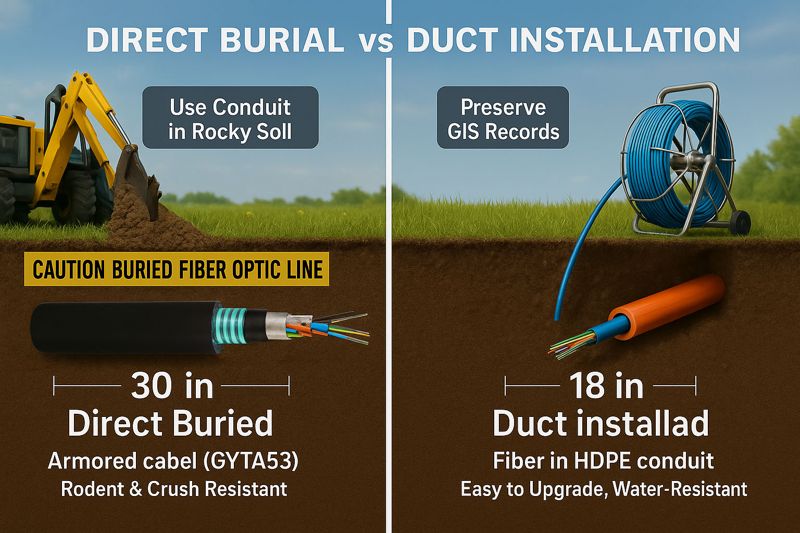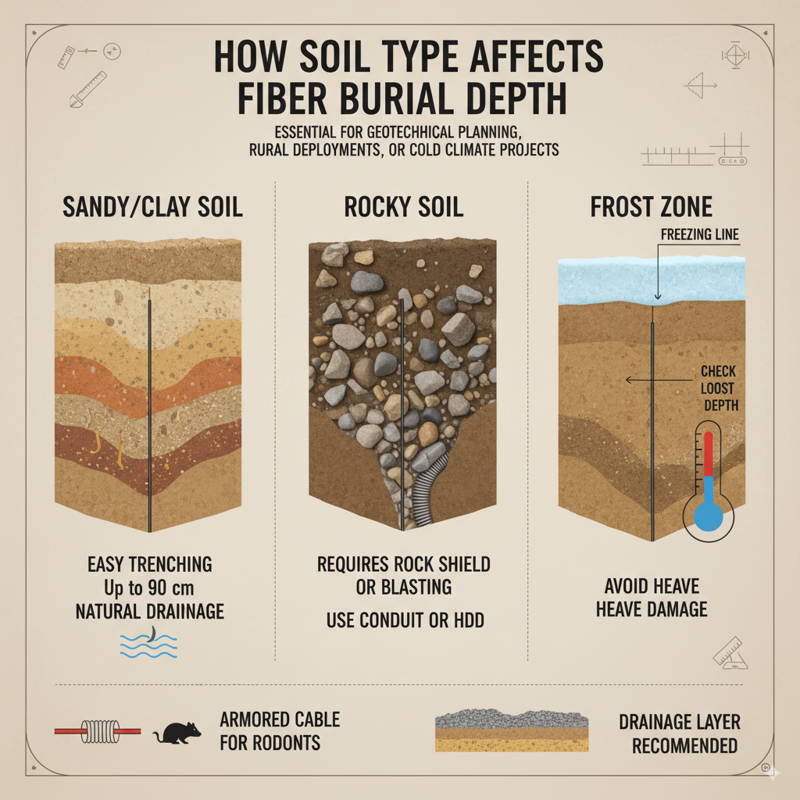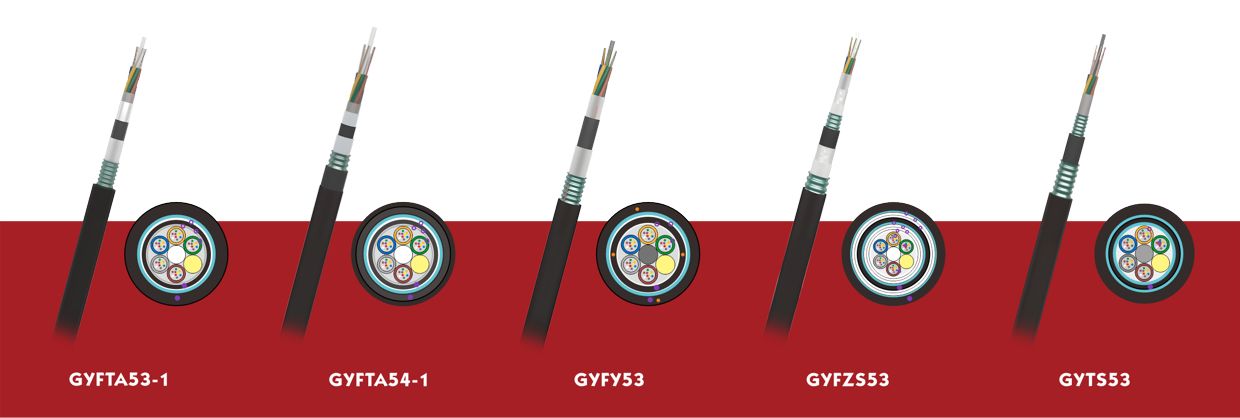Cable & Wire | High quality and excellent service at reasonable prices.
info@zion-communication.com
Author: Site Editor Publish Time: 25-06-2025 Origin: Site
The world will continue to see an increase in demand for high-speed internet and communication. This is where fiber optic cables provide the backbone of modern digital infrastructure. However, whether with respect to FTTH (Fiber to the Home), long-distance transmission, or data center interconnects, among many others, there arise questions like: How deep do fiber optic cables go? What steps should one take to ensure no damage is sustained?

In advanced way, fiber optic cables are based on regulations, type of environment, and application. Following are the guided principles for it:
Installation Environment | Typical Burial Depth |
Urban Areas (paved roads, sidewalks) | 12–24 inches (30–60 cm) |
Rural/Open Areas (field, unpaved roads) | 24–36 inches (60–90 cm) |
Road Crossings or High-Traffic Zones | 36–48 inches (90–120 cm) |
Cold Regions (to avoid frost damage) | > 36 inches (typically below frost line) |
These depths are designed to protect the cable from:
Mistakes, such as mechanical damage when digging or performing construction works
Regular fluctuations of temperature, such as variations in winter and spring (frost heave)
Entrance of water and rodent including mouse
The real depth on the ground can be influenced by just a few things:
Soft soils (sand, clay): Easier to bury deeper.
The rocky or compacted soils restrict the trench depth, they tend to favor the armored cable or duct protection.

Armored Fiber Optic Cables (e.g., GYTA53, GYTA33): They are made for burials with additional metal tape and waterproof materials.
Non-armored cables are often used with HDPE conduits or ducts for coverage.

Way of fiber cables should always be separate from gas lines, electrical cables, and water pipes.
The requirement for a distance of 12 to 18 inches between the telephone lines and the electric lines is not in implementations in many countries.
Method | Typical Burial Depth | Protection Needed |
Direct Buried | 24–36 inches | Armored cable or warning tape above cable |
Duct Installation | 12–24 inches | Plastic or steel conduit |
Trenchless (HDD) | Variable (up to several meters) | Ducted with extra protection |
In cold regions, the cable can be buried under the frost line in order to avoid damage caused by freezing and thawing.
In the flood area or wet places, cables are buried in conduits or ducts, which drain water.
It doesn't really matter what type of fiber optic cables they are unless the excavation work is done differently. Here are some ways to avoid this:
Call utility locating services before you dig (e.g., 811, USA)
Use underground cable locators to trace existing fiber lines
Place marking tape or marker mesh over cable trench
Ensure that the installation records and GIS mapping are preserved for future reference.
Dig blindly in areas where cables are confirmed or most likely buried.
Operate the heavy machinery without prior consultation with the utilities.
Think that the depth is the same everywhere – the depth may change!

A great example of underground cable for direct burial an individual is the GYTA53. Such consists of:
Steel tape and aluminum armor with being resistant to rodents and crush
Double-layered waterproof structure
It was made for direct burial from 30 up to 90 cm depth.
There are multi-core versions for backbone functions.
This cable type is suitable for areas with harsh environments, areas where connection has to be done on rural ground, and for situations with long hauling.
Minimum 18 inches for direct burial
Separation from power: minimum 12 inches
HDPE conduit utilized the majority of the time in commercial installation of cables.
The burial depth of these cables is varying from 45 to 90 cm (18 – 35 inches).
The focus is laid on duct systems to achieve flexibility and maintenance.
Typical depth in the open desert or developed cities is 60–100 cm with minimum temperature.
Mostly armored outdoor cables or multi-way duct banks are most preferred.
The fashion of burying fiber optic cable is different, but its burying depth is usually between 12 and 36 inches (30–90 cm). This disparity depends on the location, method, and the environmental conditions.
Armored fiber cables and ducts that are protective for the equipment are made for permanent usage records.
Every one who works in this field should be mindful of the fact that communicating data over fiber infrastructure should be pre-implemented with utilities and the use of location services before digging.
Whether it is you, a contractor, or your ISP who are concerned about the burial depth of fiber cables, the depth of cable burial is vital in order to prevent long outages and to protect your investment in the next-gen internet technologies.

James is a technical manager and associate at Zion Communication.
Specializes in Optical Fiber communications, FTTH Solutions,
Fiber optic cables, ADSS cable, and ODN networks.
james@zion-communication.com
+86 13777460328
